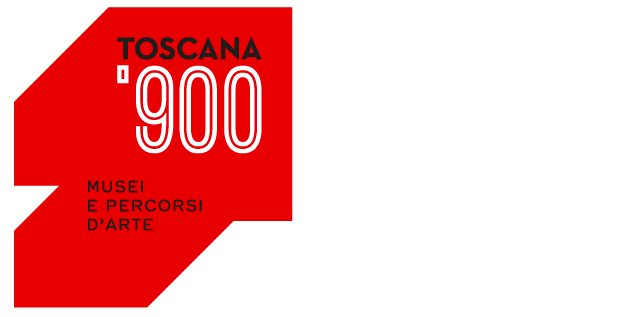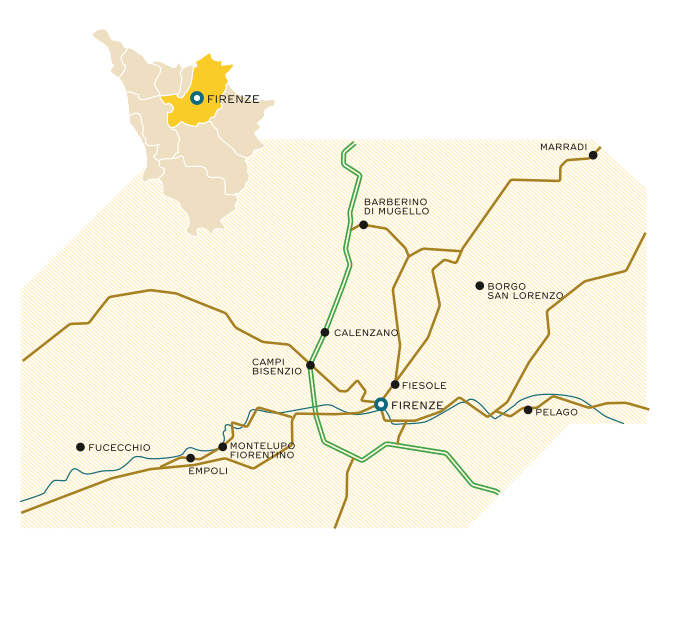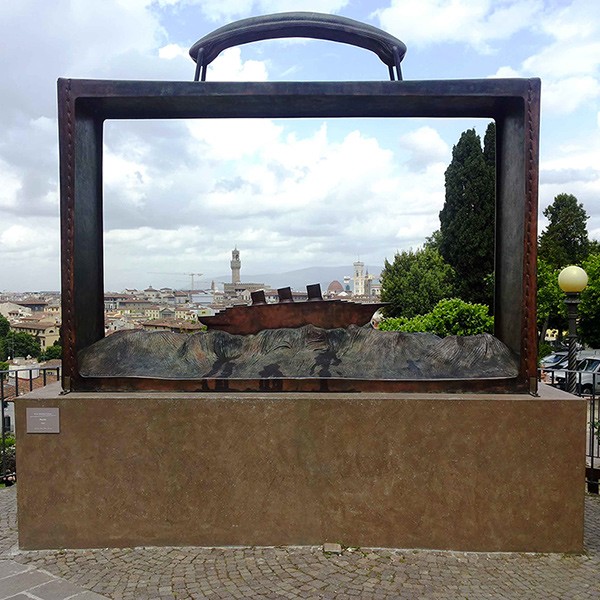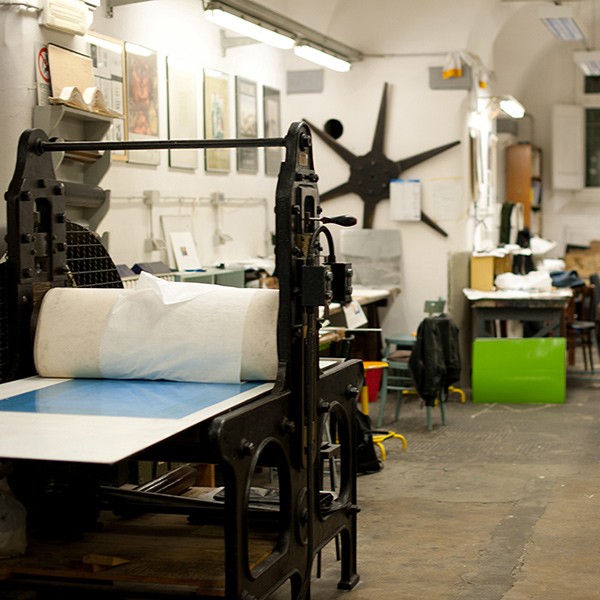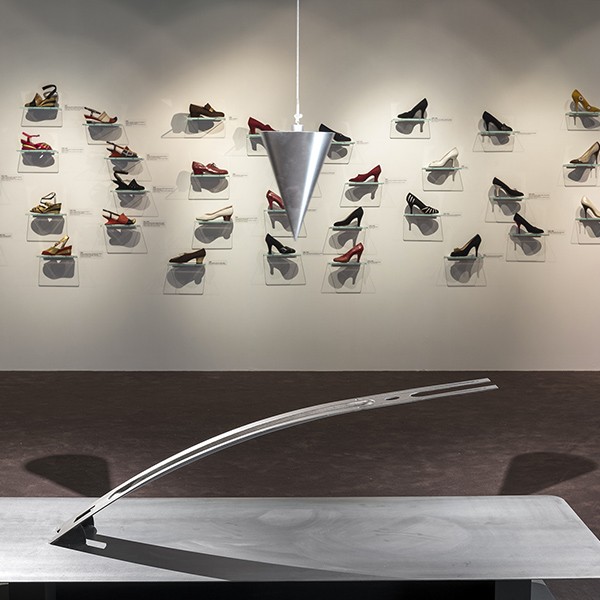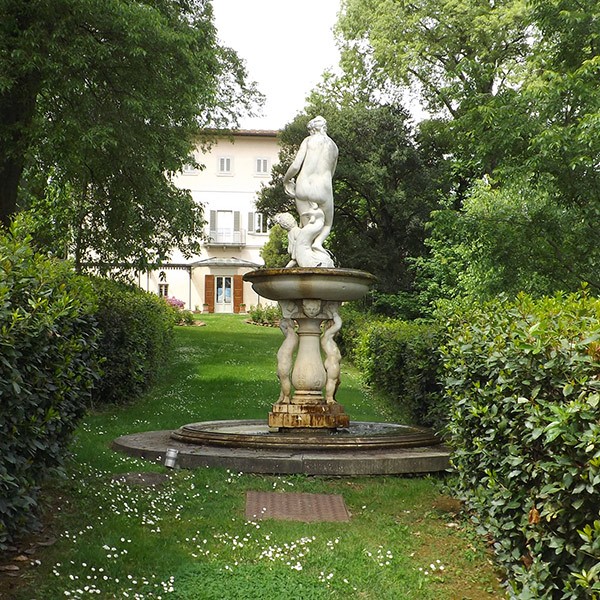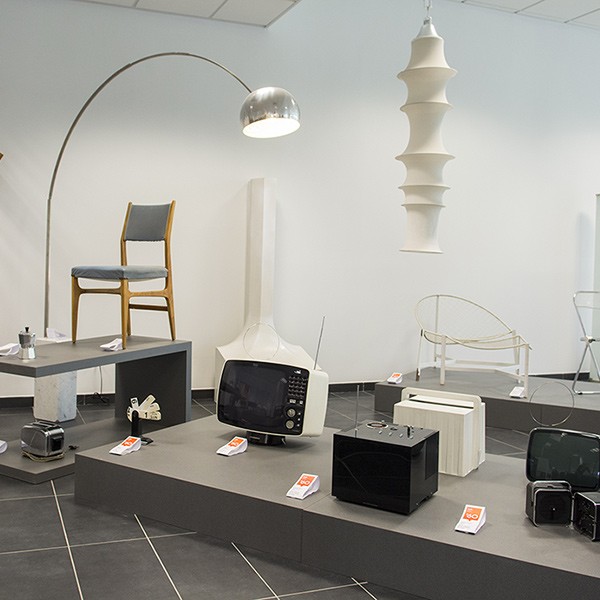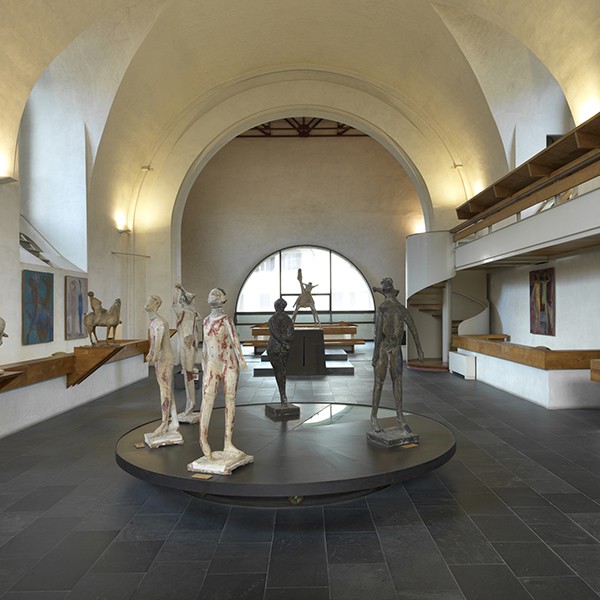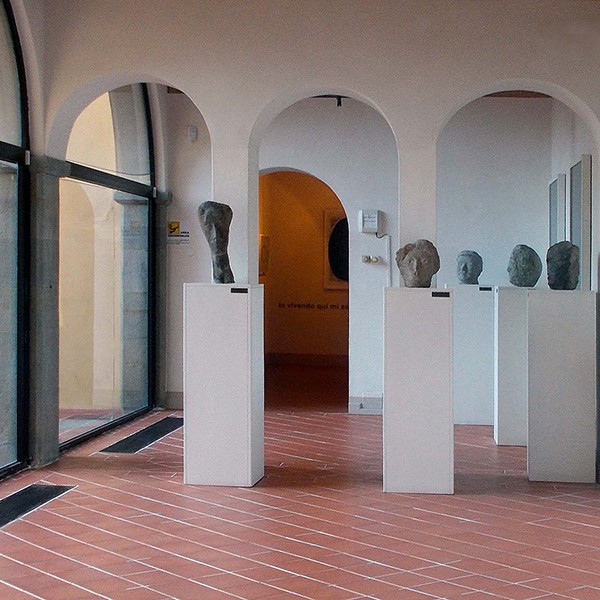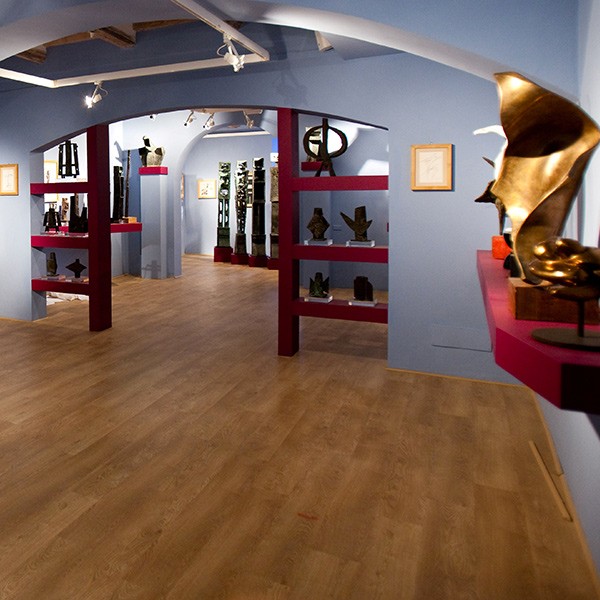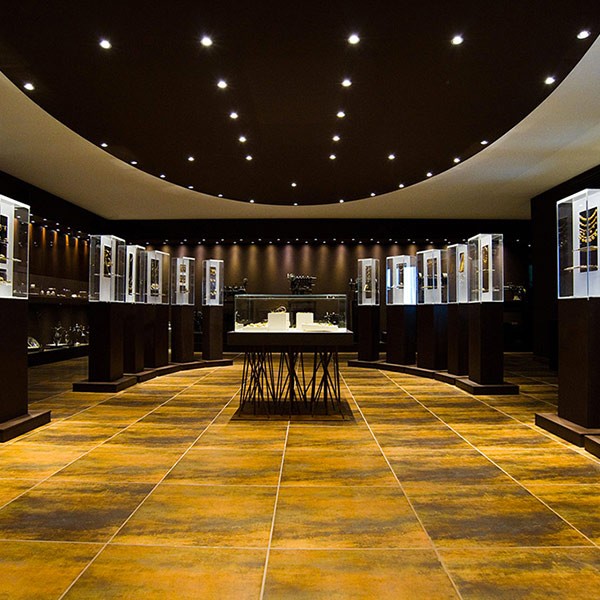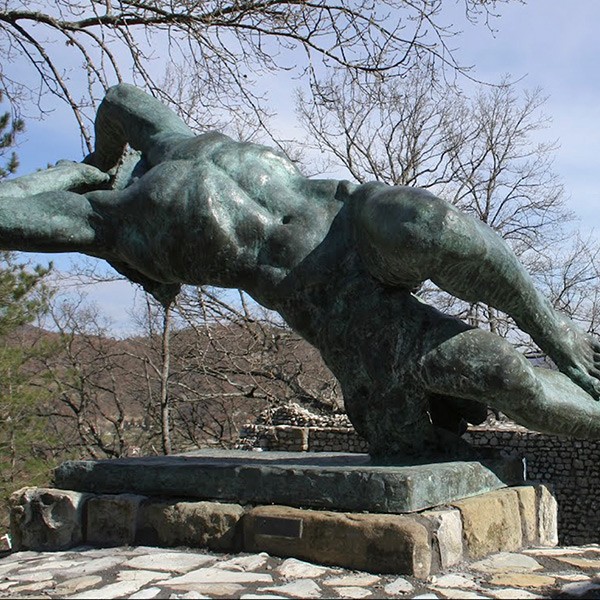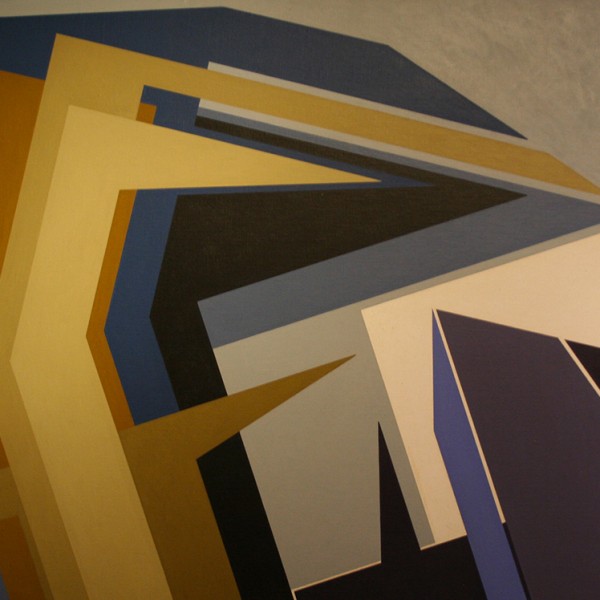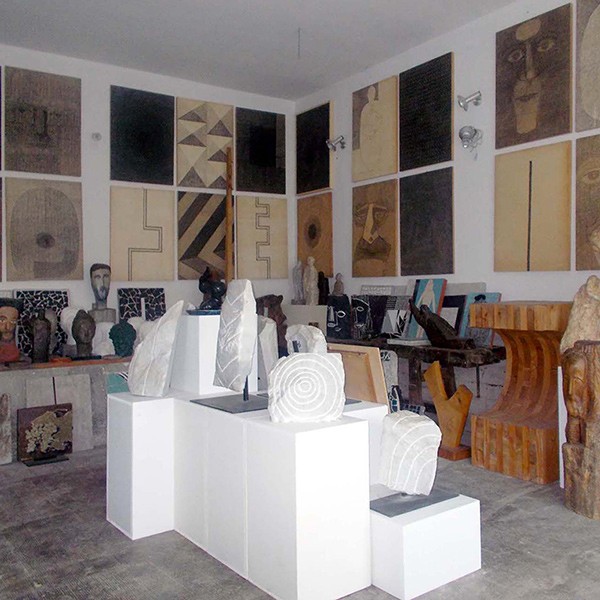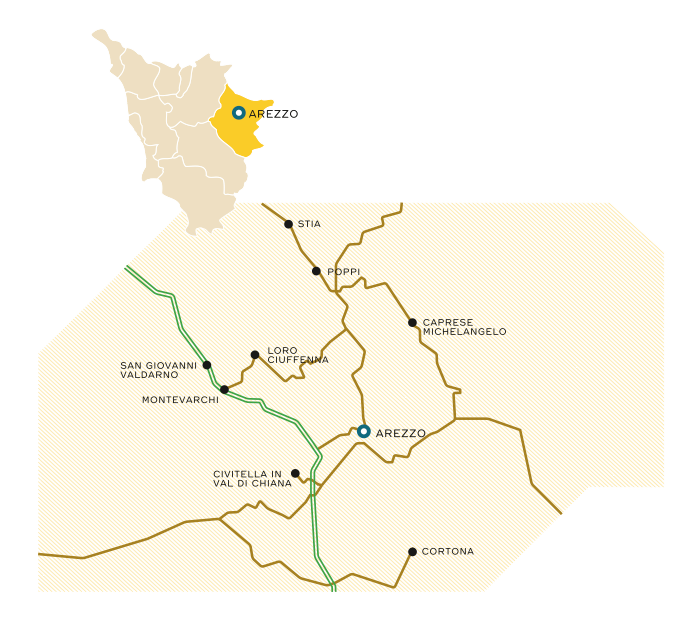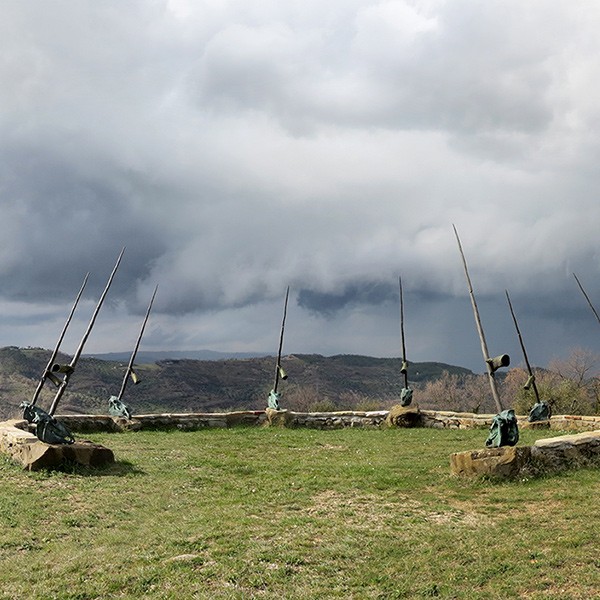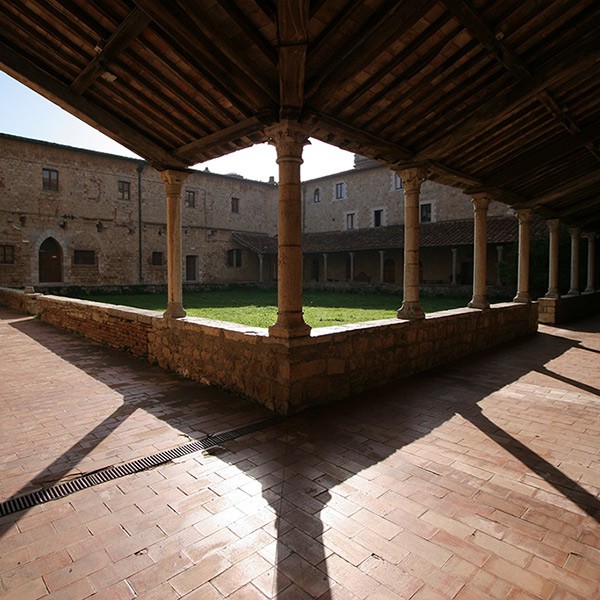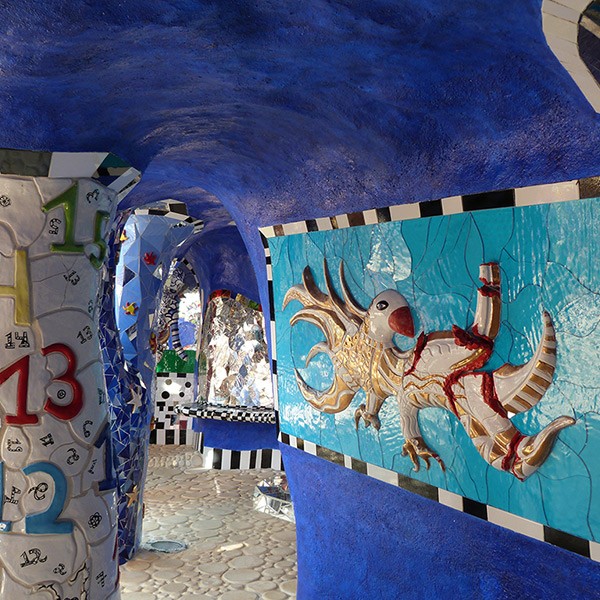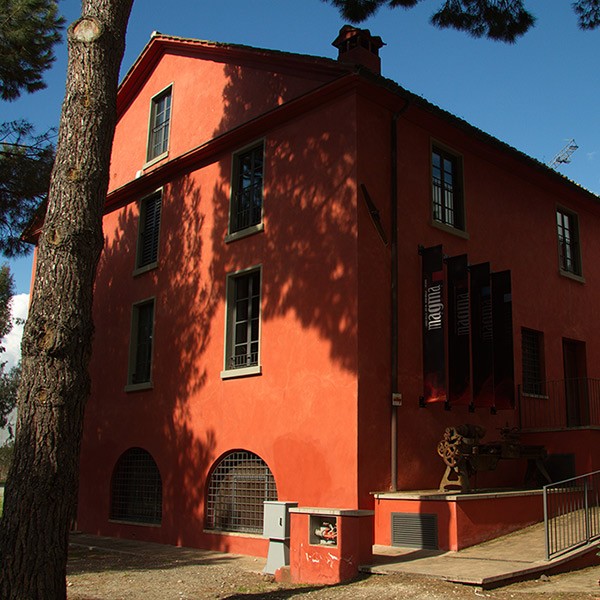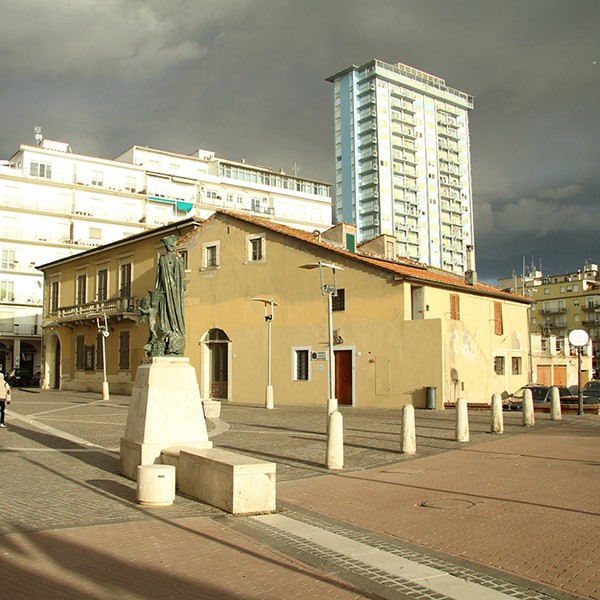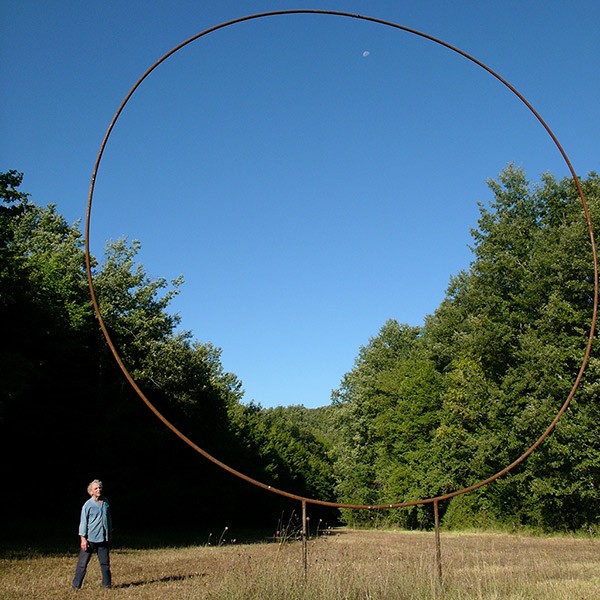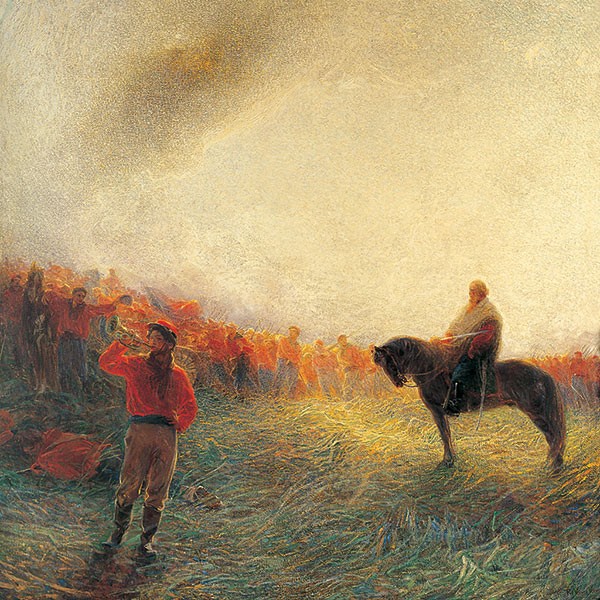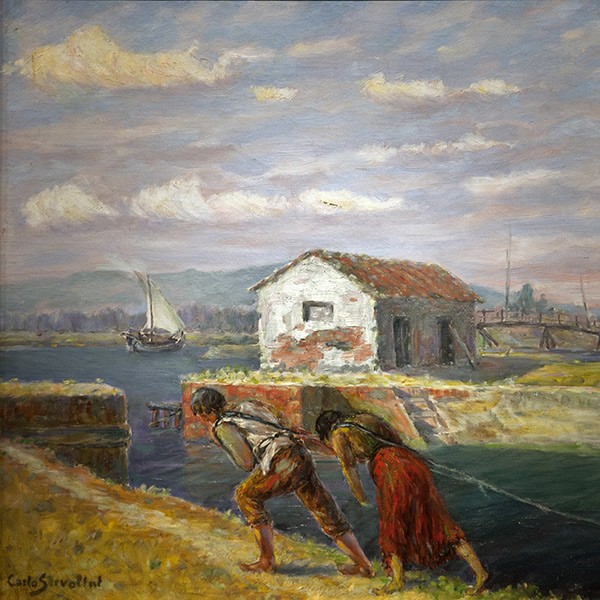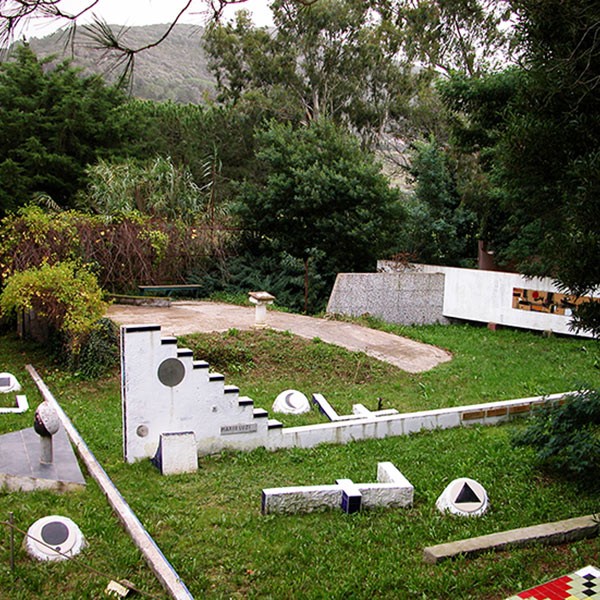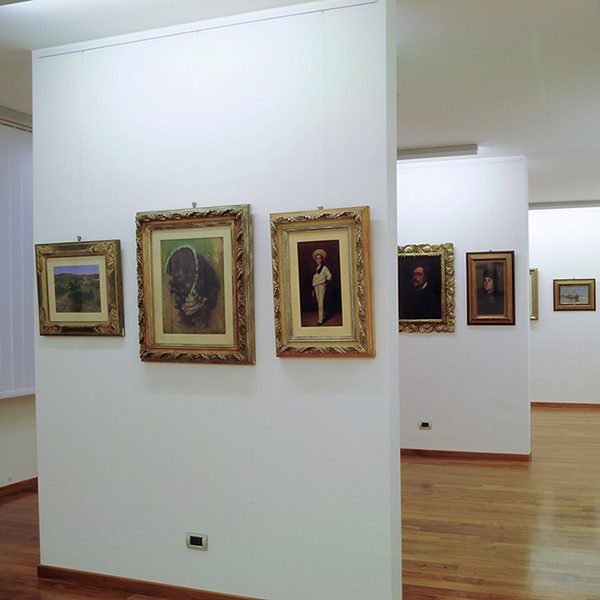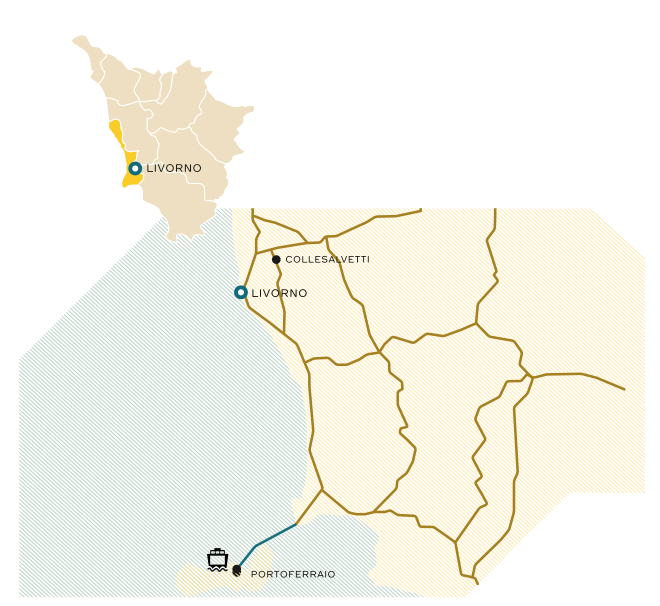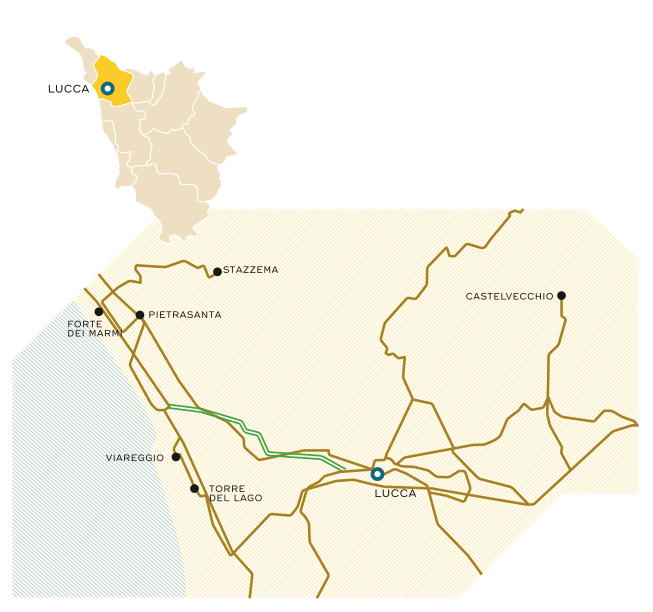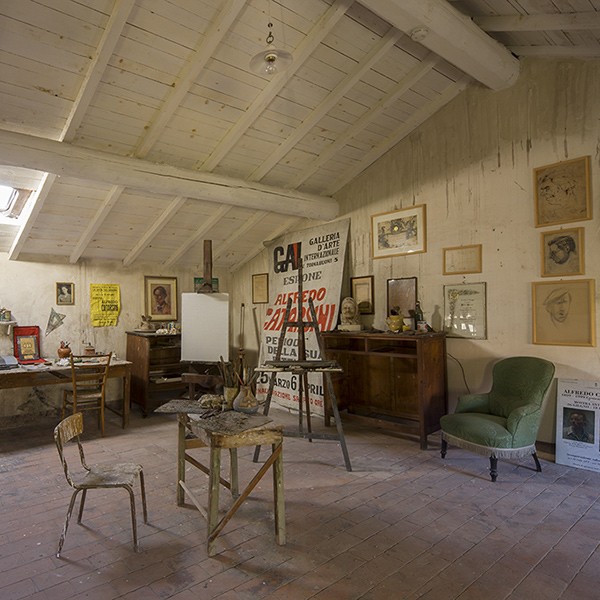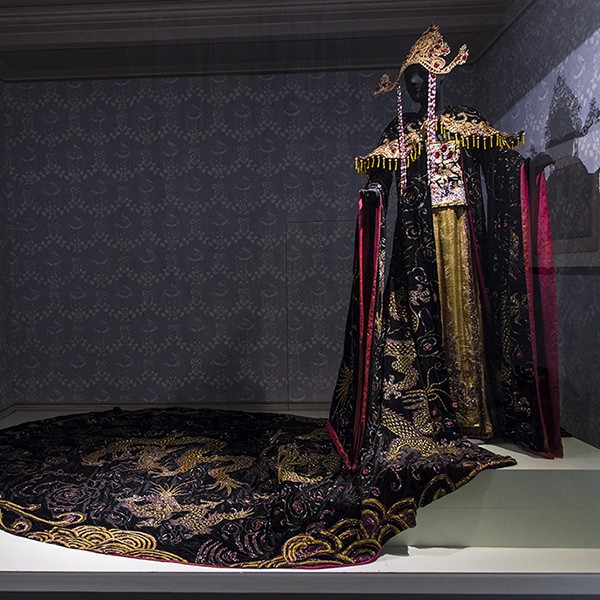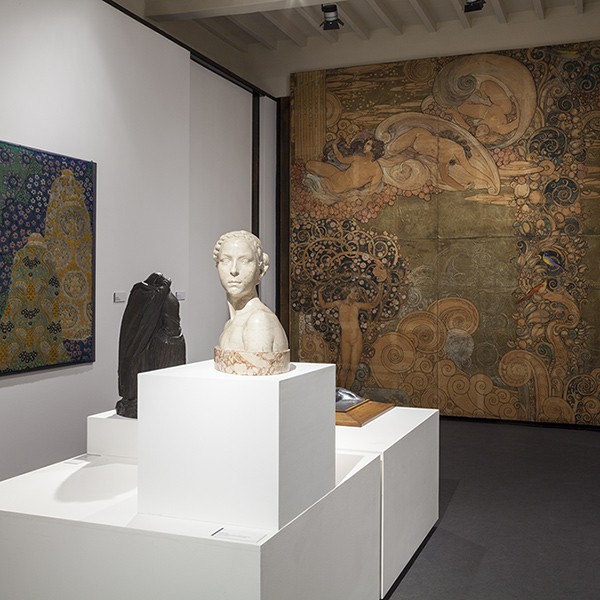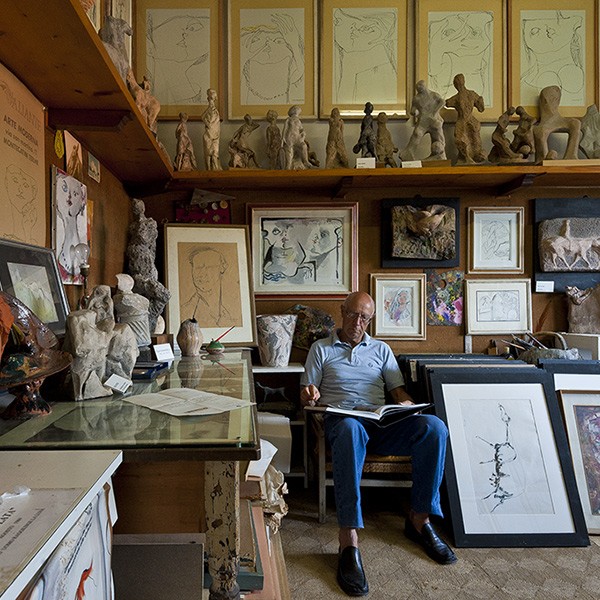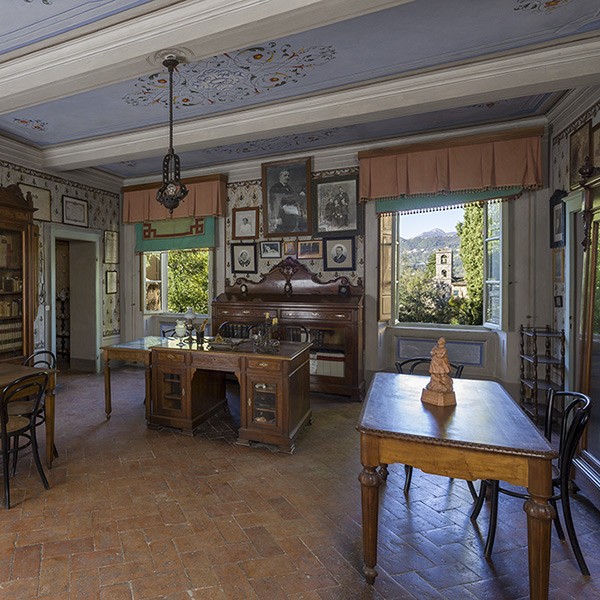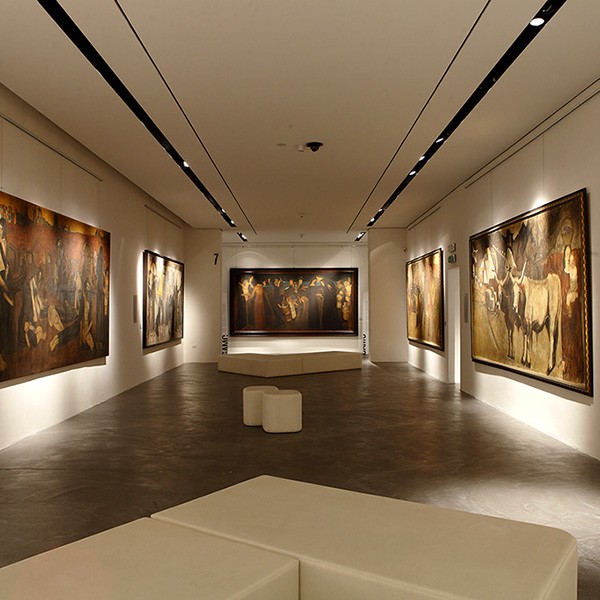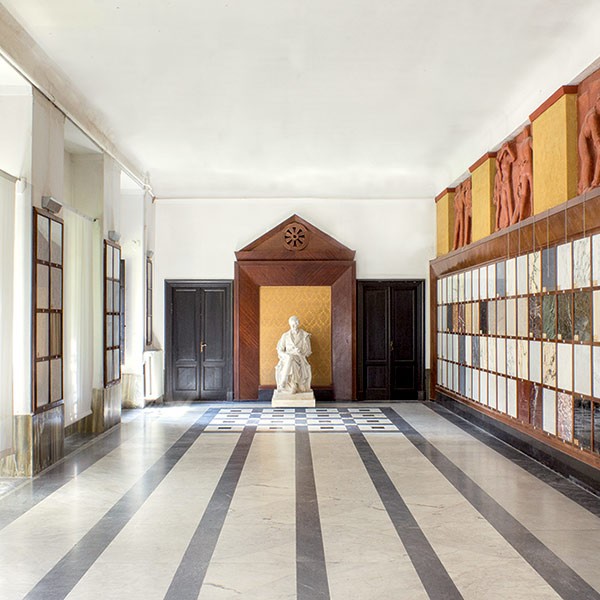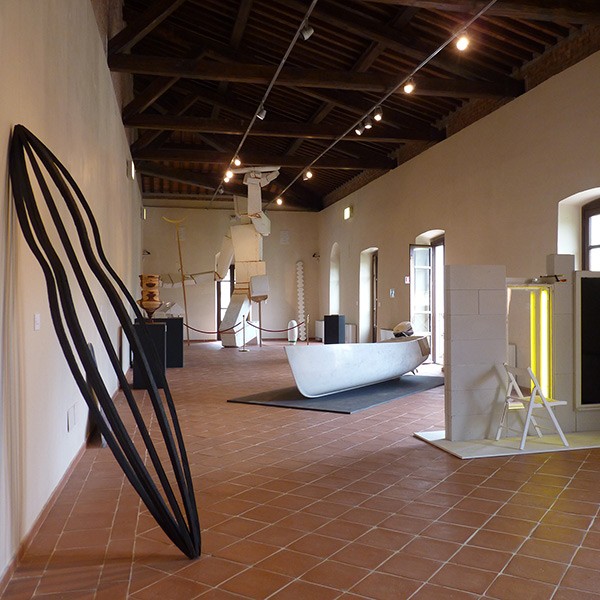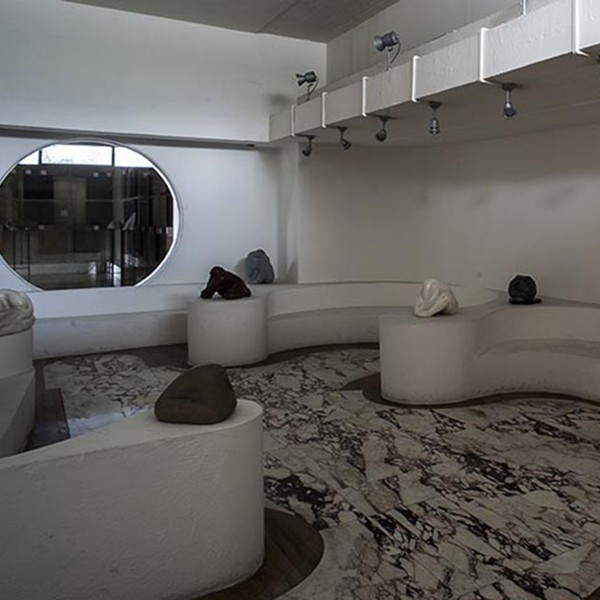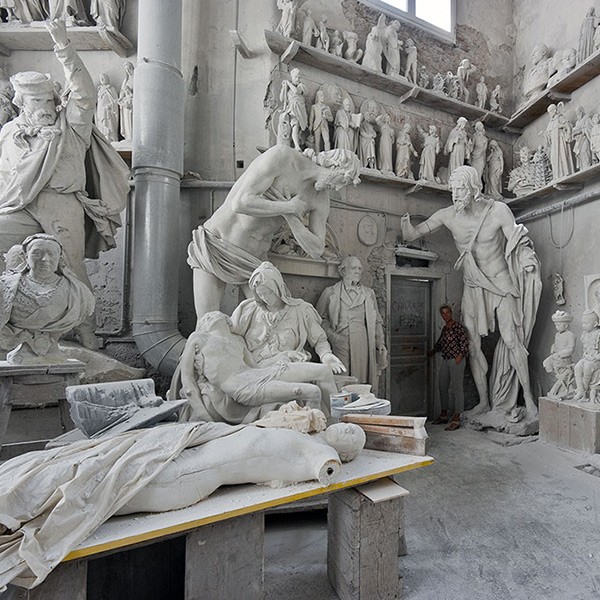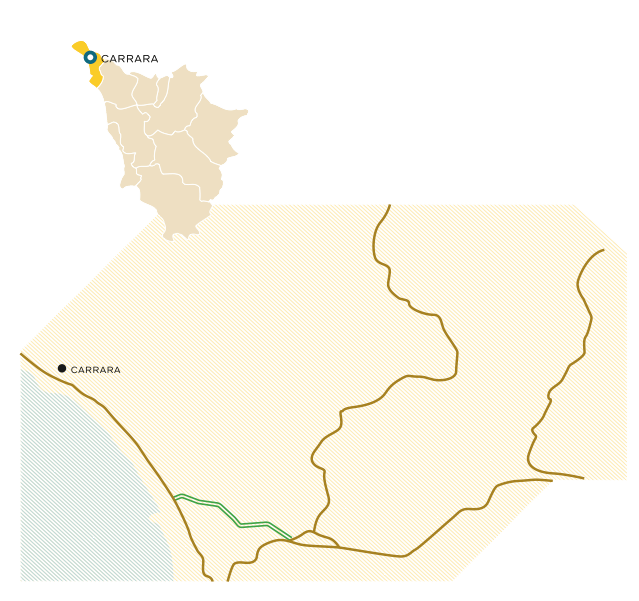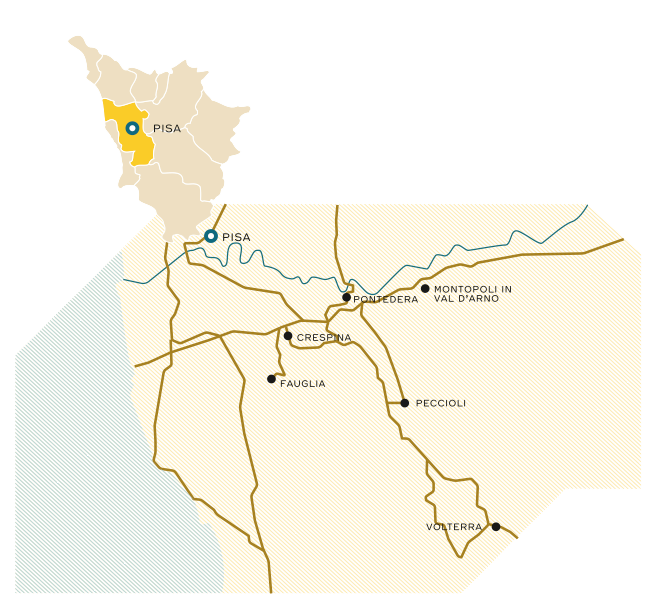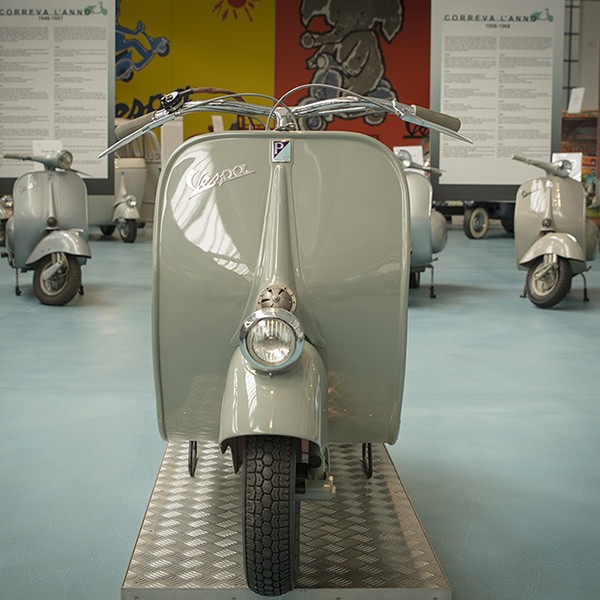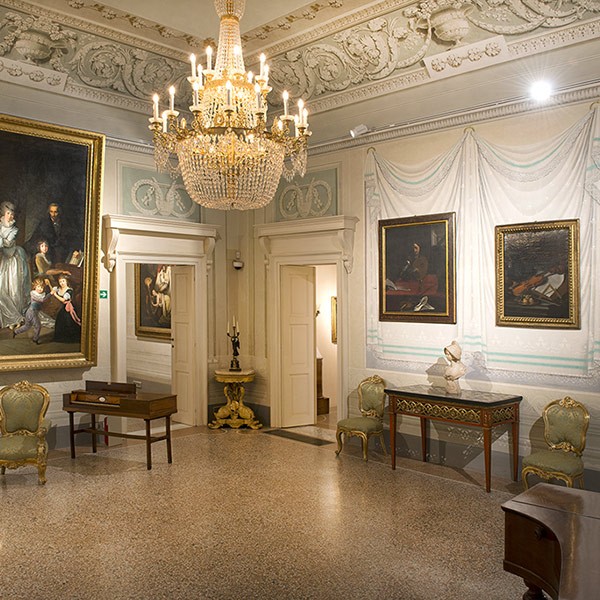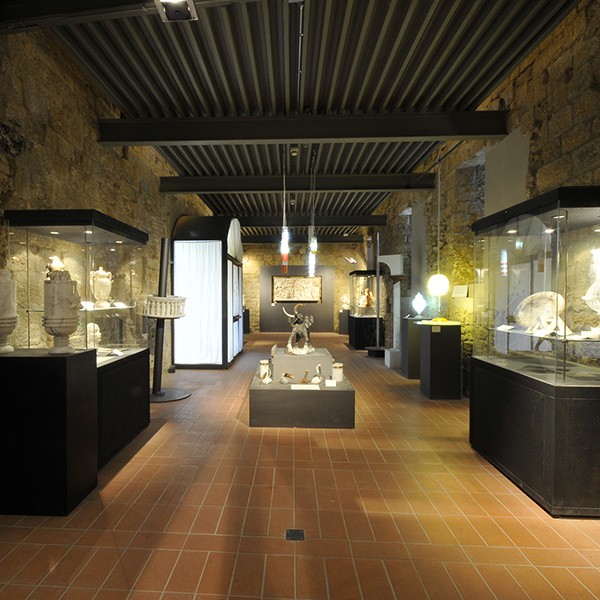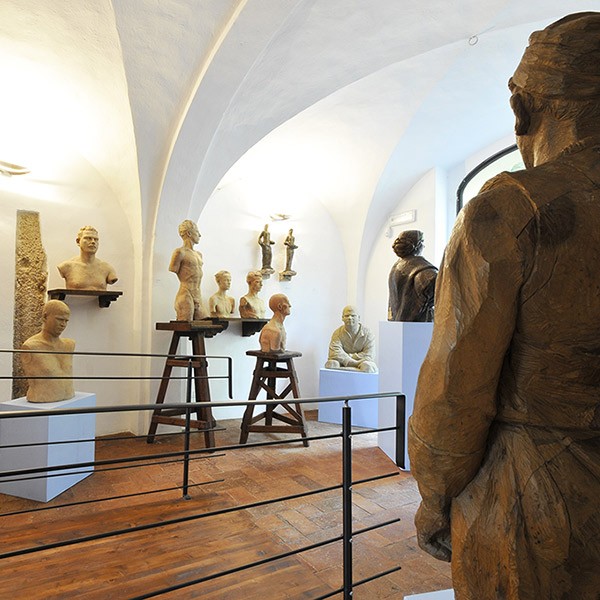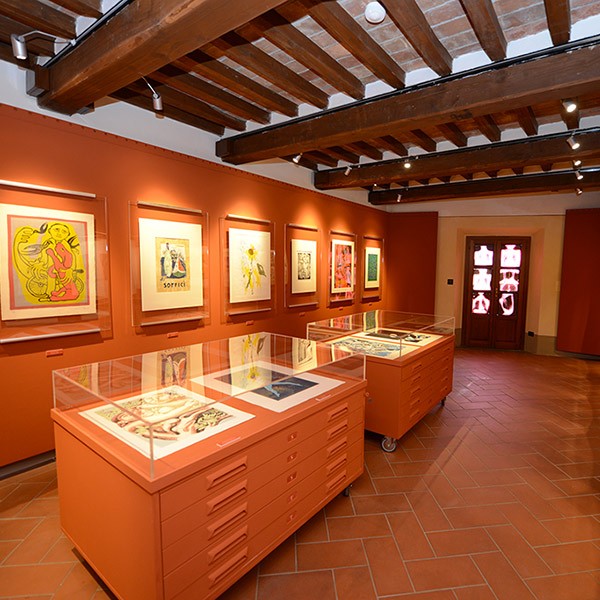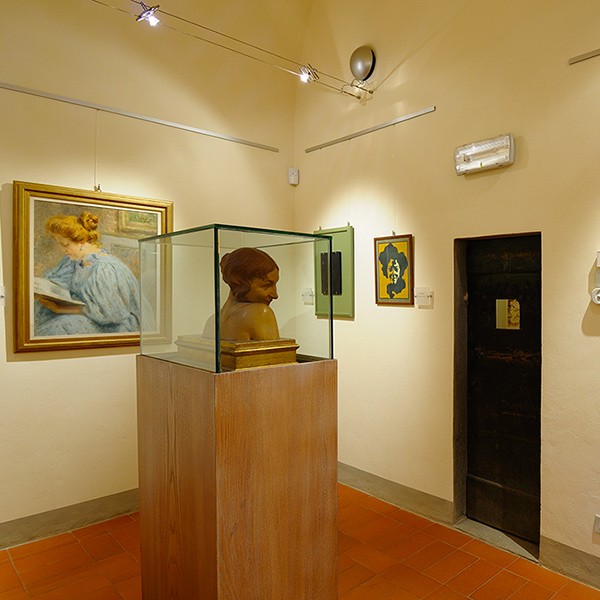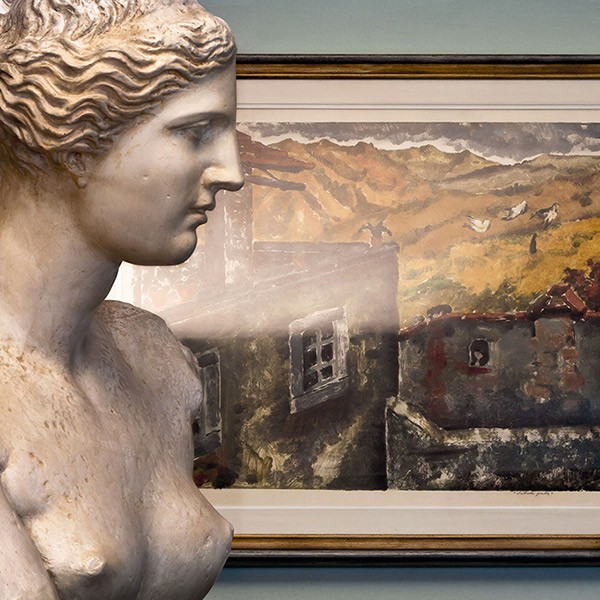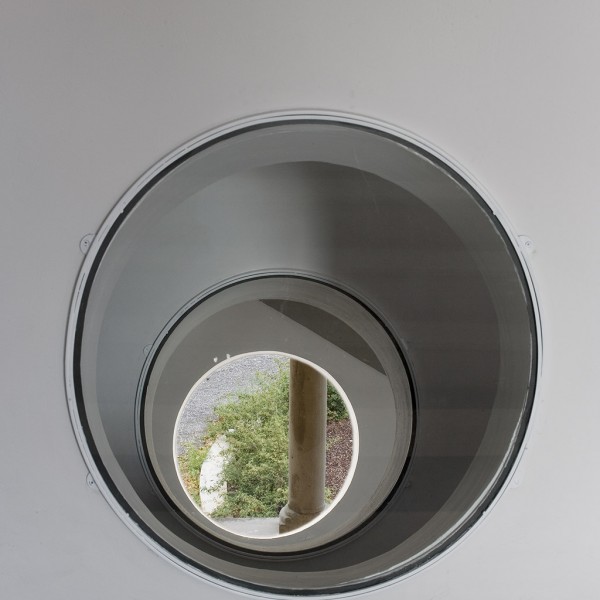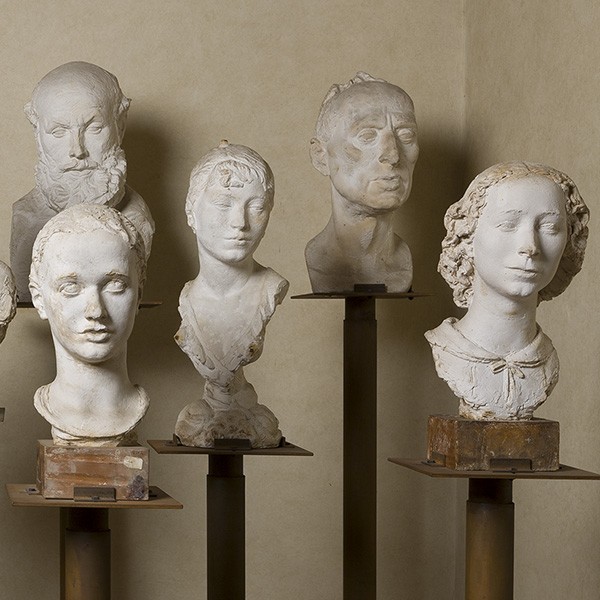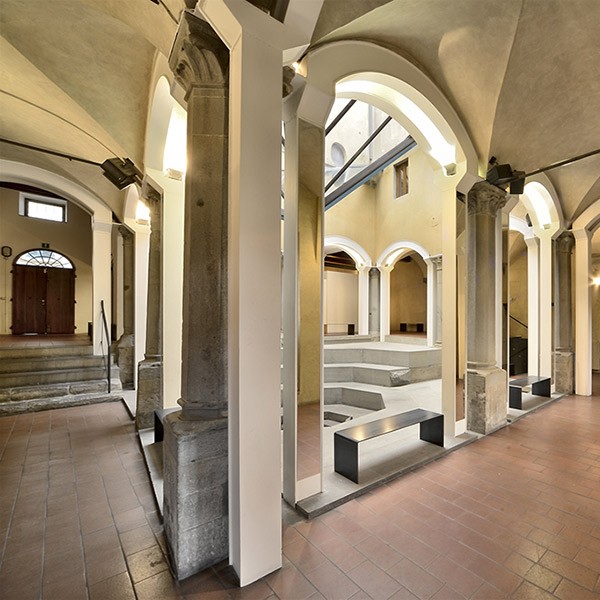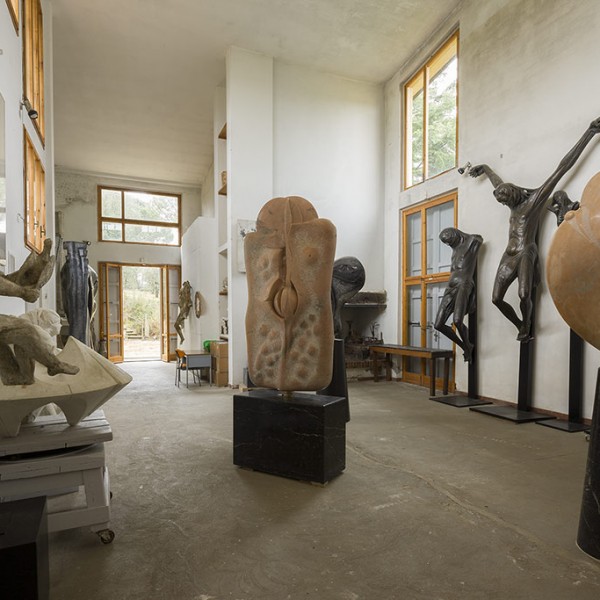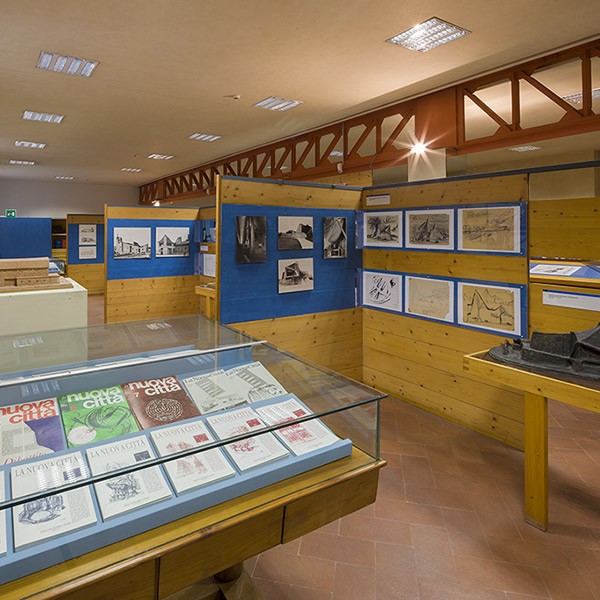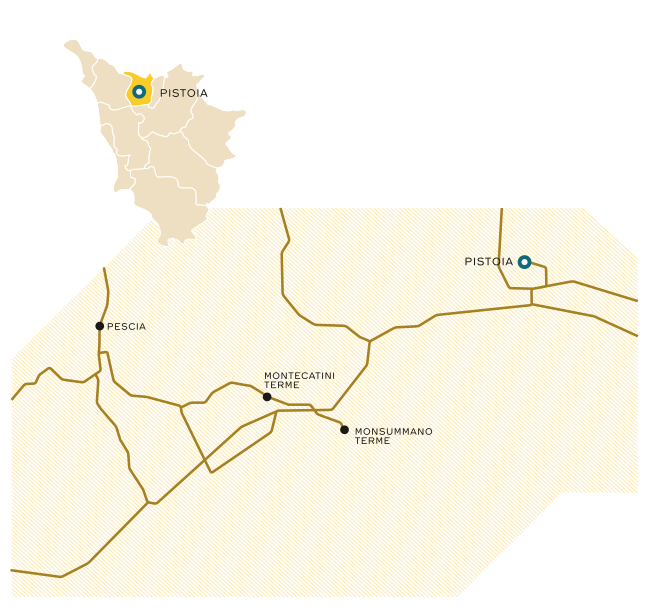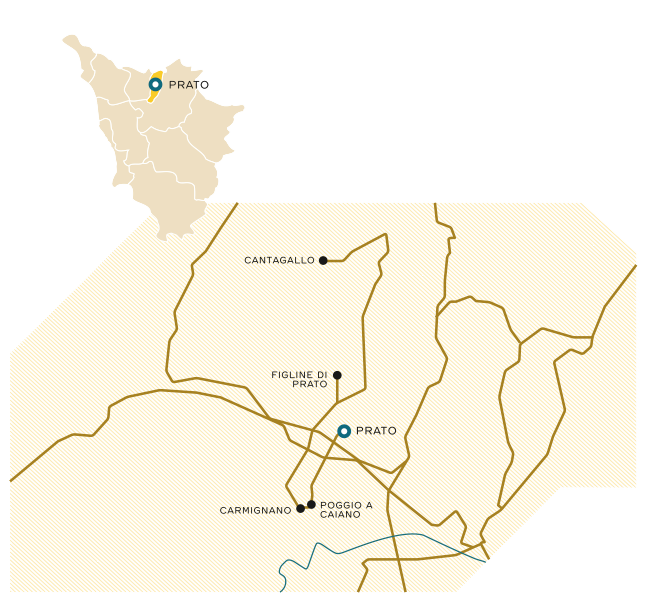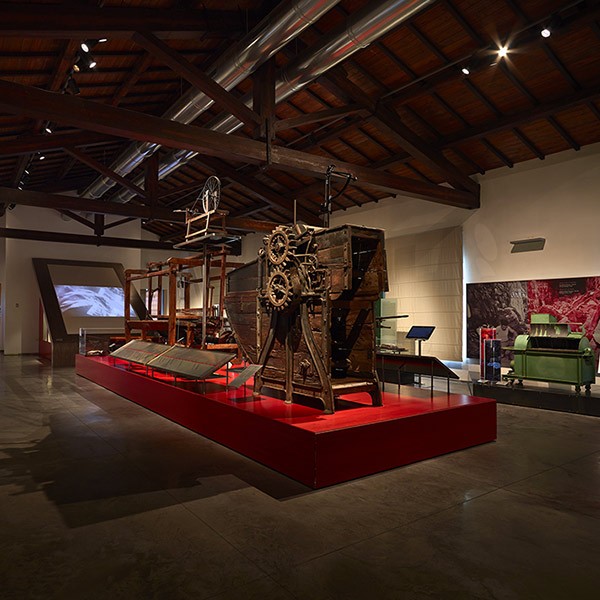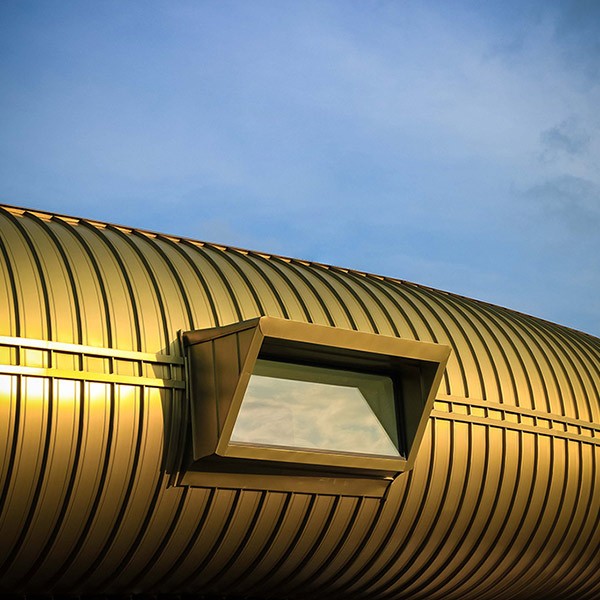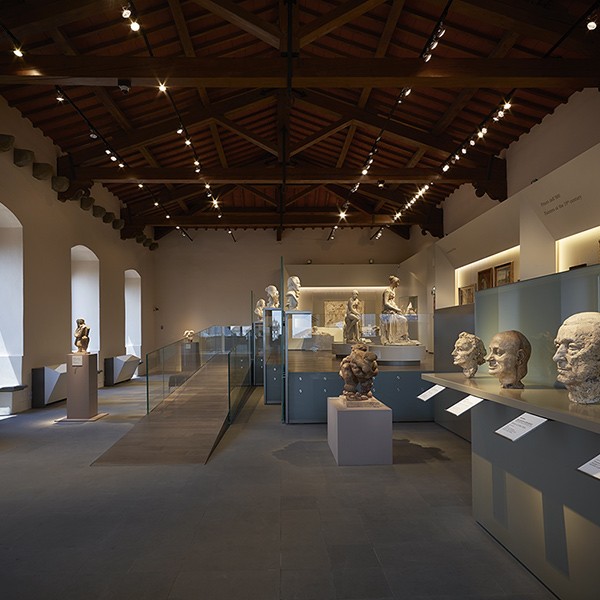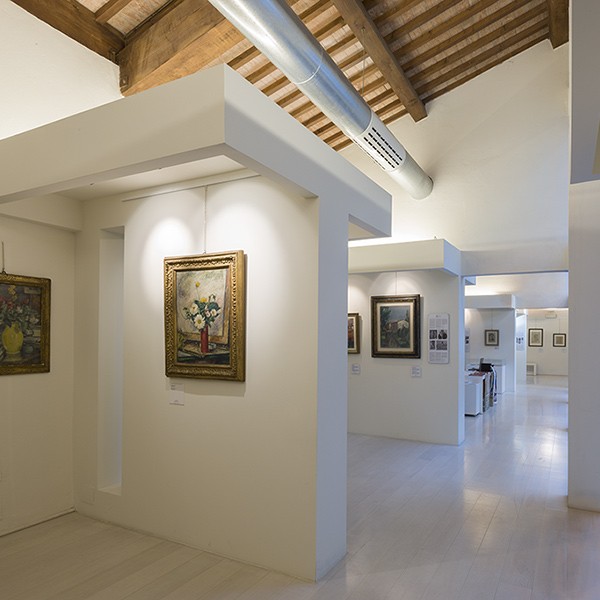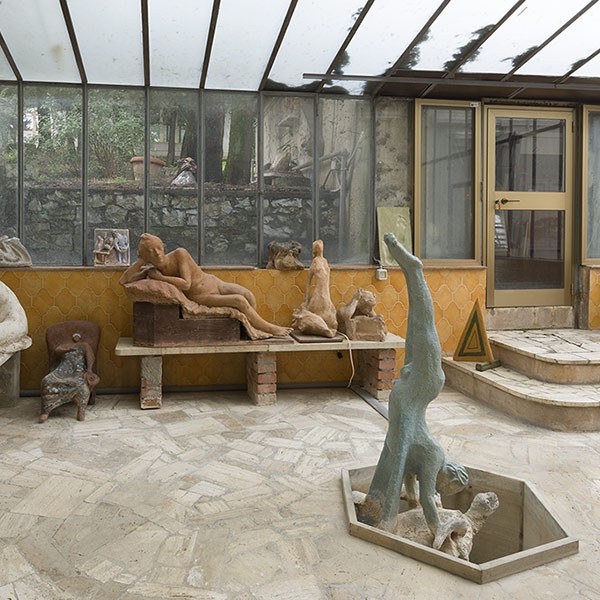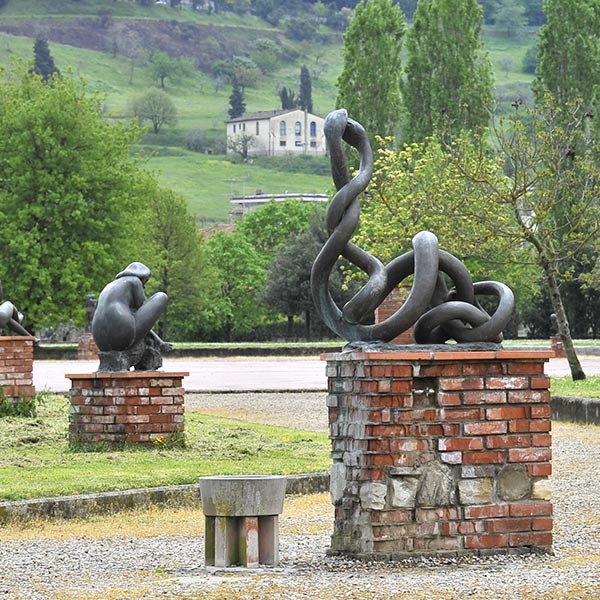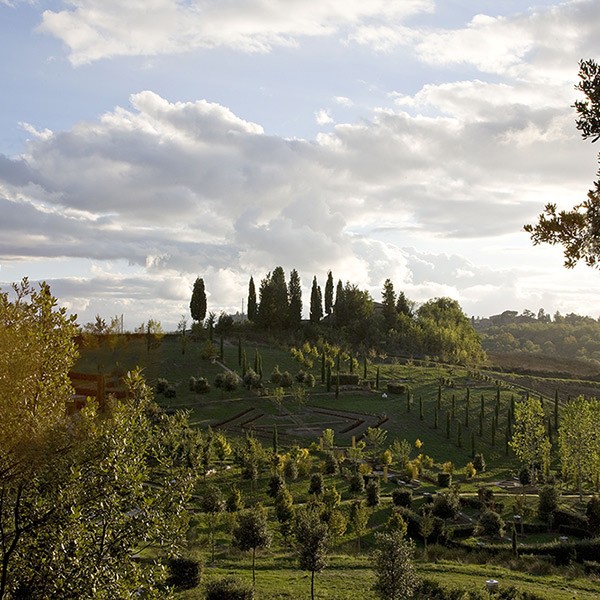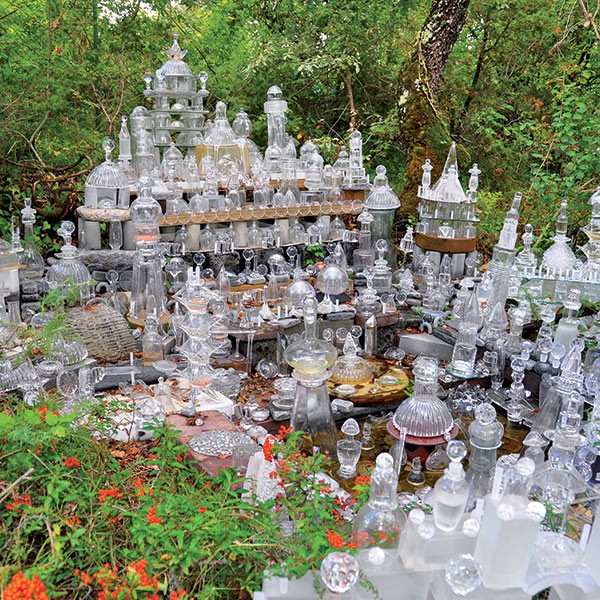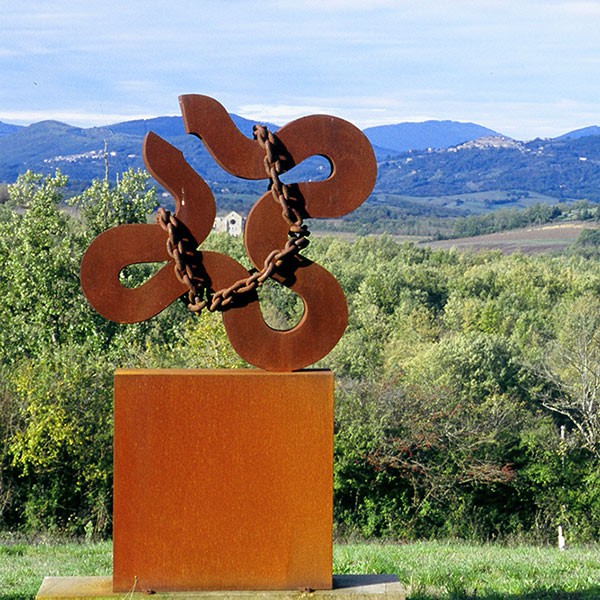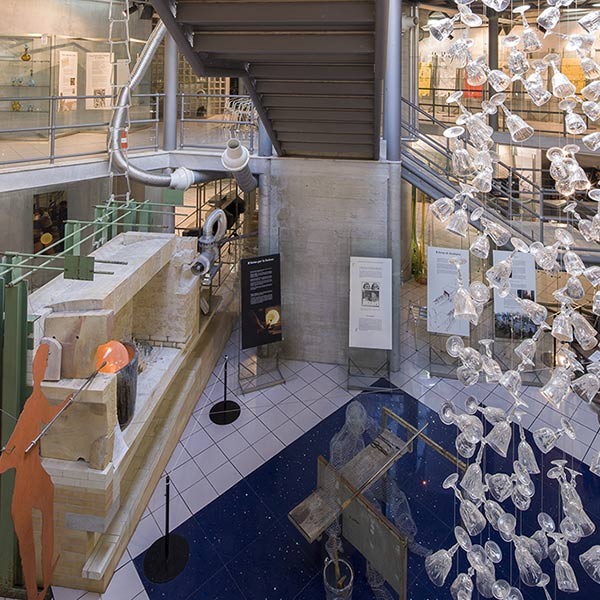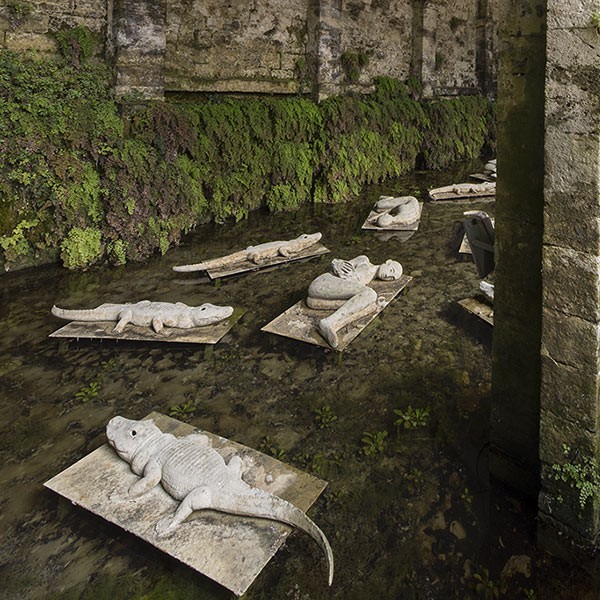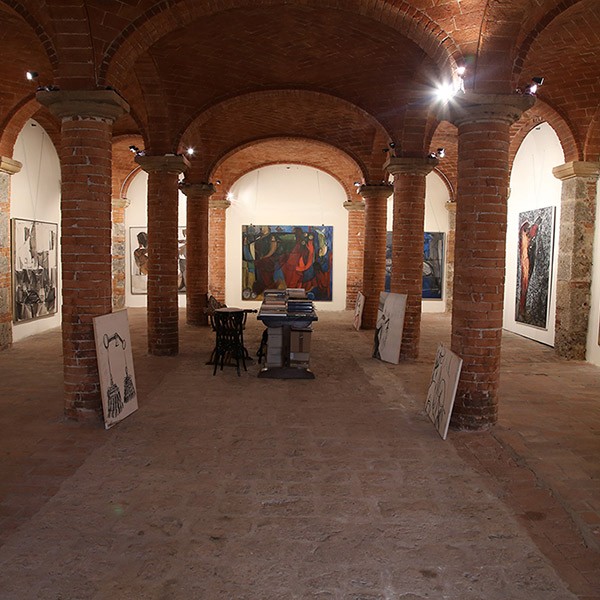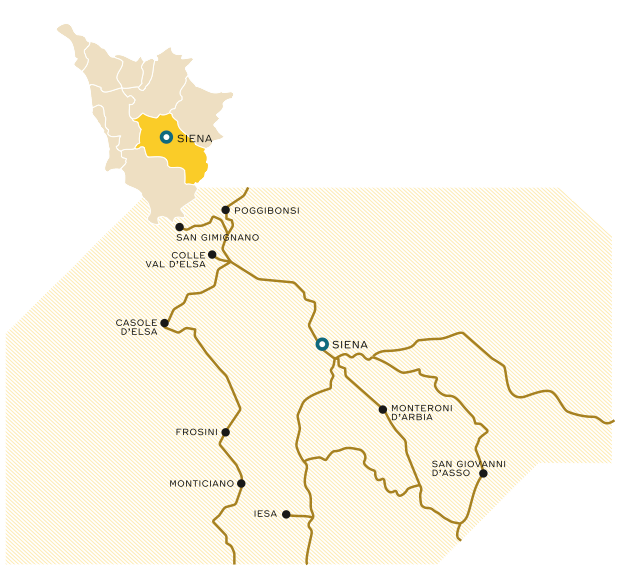FLORENCE
The image of Florence as a new Athens, with its illustrious and picturesque traces of the past, and the signs of human intervention which over time have redrawn the landscape, as in the altarpieces of the fourteenth-century Primitives: this is the idea that surfaces when consulting the travel albums of foreign travellers at the beginning of the twentieth century when Florence was their destination of choice. It was a time when the stereotype that had already enclosed the city in a gilded cage as the “cradle of the Renaissance” was already well established. And yet the signs of encroaching modernity were not ignored to judge from public and private collections, art schools, and the squares and streets of the towns.
AREZZO
The province of Arezzo has a large number of museums and galleries dedicated to twentieth century-art, the result of a regional vocation which first appeared in the 1960s, has become more established in the past twenty years, and can now be said to have its own historic dimension of proven relevance.
Overall the picture is decidedly heterogeneous, albeit with a prevalence of museums of a general nature, i.e. “generically” dedicated to documenting twentieth century art.
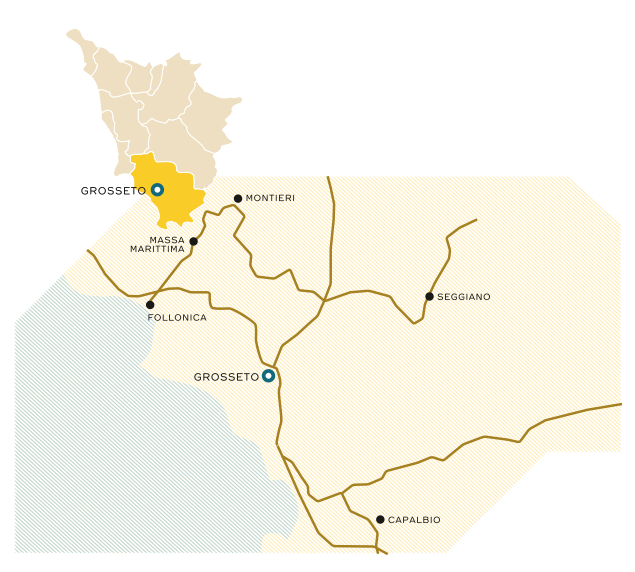
GROSSETO
The twentieth-century artistic vocation of this outlying area is undoubtedly ascribable to the creation from the 1980s onwards of several art parks, a category in which the area, and not only Tuscany, takes the lead. On the other hand, museums for twentieth-century art are limited to the Pinacoteca Modigliani in Follonica and the Collezione Martini in Massa Marittima, while the provincial capital, Grosseto, does not have an appointed museum, that role being partly covered by CEDAV, the documentation and cataloguing centre.
LIVORNO
The early twentieth century witnessed the glorious season of the Macchiaioli, artists who chiefly painted in the environs of Livorno (Leghorn, home to Giovanni Fattori, d. 1908) and the renowned seaside resorts, starting with Castiglioncello. What then emerged in Tuscany was the generation of Livorno-based painters known as the post-Macchiaioli, who developed their research from the formal problems first raised by the Macchiaioli: they either provided a modern reinterpretation of this school (as in the case of Oscar Ghiglia, Mario Puccini, and Ulvi Liegi), or set themselves in contrast to it, for instance by embracing the widespread Divisionist approach (as best exemplified by Benvenuto Benvenuti and Plinio Nomellini)
LUCCA
The province of Lucca is an area strongly oriented towards the conservation and promotion of twentieth-century art, which has strong roots there. It is not however a uniform panorama, but rather a scenario organized by areas geographically different from one another and, furthermore, independent of the leading city.
MASSA CARRARA
On first arriving in Carrara, the visitor may feel almost overwhelmed by the Apuan Alps, the mountains rising behind the gentle curve of the Versilia coast, their daunting rocky peaks white with marble. One senses immediately how inextricably the history, identity and international fame of the town is linked to the excavation and sculpting of this prestigious white marble, which even shares the name of the city.
PISA
The province of Pisa is a dynamic territory where the development of a network for the safeguarding and promotion of twentieth- century art is still progress. But running parallel to the widespread number of printing works and publishing houses is a thriving graphics sector that comprises important institutions and collections.
PISTOIA
With canny foresight, at the beginning of the century Antonio Maraini recognized the role of Pistoia in Tuscany’s artistic reawakening. Pistoia’s present-day museums are a tribute to this “precious alcove, enclosed in its private world” consisting of artists with high ideals and sound neo-figurative styles right from the start of the century, yet also home to spirits abreast with the times and involved in the shaping of new artistic languages. This, then, is a land enriched by its “provincial” aspects, yet at the same time stimulated by national trends.
PRATO
It was Ardengo Soffici — painter, poet, essayist, and genius loci of twentieth-century Prato — who, having inhaled the spirit of avant-gardism, from his residence at Poggio a Caiano introduced the effervescent artistic ideas of Paris into Tuscan intellectual circles. The opening in 2009 of a museum devoted to him is recognition of his paramount importance to Prato’s artistic sphere and, above all, of his key role in the Italian art of the early twentieth century.
SIENA
Writing about Siena in his Italian Hours,Henry James observed, “The great and subtle thing … in places of a heavily charged historic consciousness, is to profit by the sense of that consciousness.” The artists here, in particular, have been profoundly influenced by these spaces shaped and stratified by history.
